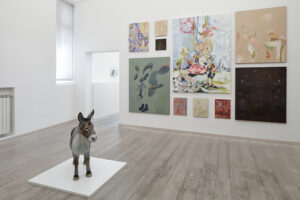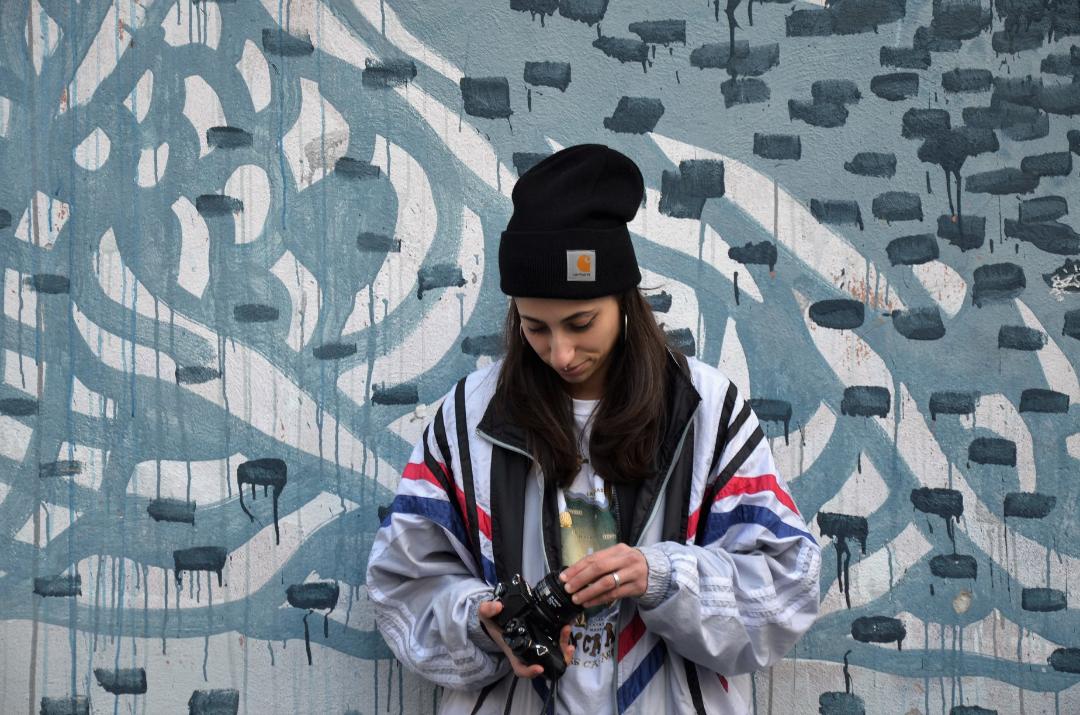Otto Gallery is one of the historic galleries in Bologna, since it was founded in 1992 in via d’Azeglio by Giuseppe Lufrano. The gallery activity is focused in particular on the Roman artists from Scuola di San Lorenzo, among these: Domenico Bianchi, Gianni Dessì, Giuseppe Gallo, Nunzio, Piero Pizzi Cannella, Marco Tirelli but sometimes it also hosts young talents and extremely important cultural activations such as Open Tour, born from an idea by Lufrano and then expanded to the city.

Giuseppe Lufrano – OTTO Gallery, Bologna
Sara Papini: How did your career as a gallery owner begin?
Giuseppe Lufrano: My first gallery experience lasted five years and I got there by chance. At the time I was graduating in art history at the University of Bologna with Renato Barilli and, at that moment, I was writing my thesis. In the meantime, my co-supervisor was collaborating with this gallery and asked me if I wanted to go and work for them and I accepted. This is how I trained, moving from the old dusty Unibo department to the Neon gallery. After five years of collaboration, I decided to open my first gallery. In that first phase I had the privilege of being able to organize exhibitions of great artists such as Carla Accardi, Tancredi and many others, but it wasn’t my story. So I started a research based on artists closest to my generation and to me, because I believe it is necessary that the work of the gallery owner must accompany that of the artists. So, I identified the Roman San Lorenzo group, similar to me. I started going to the ex pastificio where they all had studios and we started collaborating. I guessed that group could become my identity and it is something that still represents me today. In fact, at the beginning of October we opened an exhibition dedicated to an artist from that group: Marco Tirelli. I opened the first gallery at number 50 in d’Azeglio street and I found this space, where we are now, at number 55 in d’Azeglio street, thanks to a collector who was fond of the Otto Gallery many years later. This is because all of us, myself and the artists in the gallery, felt the need to expand. I have always worked with artists, following their advice. There has always been a collaboration. The spirit that led us to change and move from a small location to a larger one: it was the need at the time to express the artists’ work in the best possible way, also proposing larger works with an almost museum-like impact.

Per Barclay, Tramonto, 2019, ph credit: Dario Lasagni, courtesy Otto Gallery, Bologna
What is your idea of a gallery?
My idea of a gallery is that of a place that becomes a square, an agora where you can meet artists or, better yet, their ideas, but also those of collectors, curators and other gallery colleagues. I saw it and continue to see it as a training ground for ideas, a laboratory. The first place where the work of the artists becomes public. The exhibition in the gallery is an extremely important moment for the gallery owner, for the work, for the artist and for the user, whoever he/she may be. When the curator goes to the artist’s studio, he can certainly identify the ideas there already, but the truth is he proves it in an exhibition and where does the first exhibition usually take place? Inside a gallery. The other places, from museums to the foundations, can arrive later, from a legacy that comes directly from the gallery. It is a primary place, where the artists compare themselves with their work and with the public, understood in a broad sense. A sort of epiphany occurs here. This is because as long as the work remains in the studio it is a private matter, while art by its nature needs to interact with a wider public, to have a public dimension. Subsequently another step comes, namely the creation of the story, which is fundamental to understand the contents of the work. The transition between artist and gallery owner or curator is extremely important in order to create the narrative of the upcoming exhibition.

AA.VV., Tetraedro, a cura di Alberto Zanchetta, 2021, ph credit: Carlo Favero, courtesy Otto Gallery, Bologna
How many exhibitions does Otto Gallery host during the year?
Before Covid-19 I organized five exhibitions a year, but now I have settled on three exhibitions a year, and this is because the organization times have lengthened, in addition to the fact that there are also fairs to take care of and prepare. In my opinion there is also a need for greater sedimentation on the part of the public who interface with an exhibition. It doesn’t make much sense to organize an exhibition every month and a half, it’s a waste. I prefer to focus on deeper work, communication and creating insights. In fact, we do in-depth analysis on each artist we send via email. To do this it takes time and it is therefore important that the exhibition last longer, to best build this story. We are very present on social media but we always want to support it with face-to-face work. Social media is an important channel but we always try to bring the public to the gallery. On social media, in fact, before a vernissage, we do not publish the works that will be present, but rather we sponsor the artists. If you want to see the work you have to come to the gallery!

Gianni Dessì, Sestante, 2018, ph credit: Dario Lasagni, courtesy Otto Gallery, Bologna
In addition to managing the gallery, you teach at the Academy of Fine Arts, here in Bologna.
Exactly. When I finished my studies, I decided to put aside the idea of teaching to concentrate on being a gallery owner. I went on my way, never feeling the need for teaching again. Ten years ago, however, Luca Caccioni asked me to organize something with the students of the academy in the gallery for the end of the year and I accepted and thus the Open Tour project was born. At the same time the visual arts department was being reformed and so I was proposed to start teaching to bring to students my direct experience of the art market and how it worked.
Info:

She was born in Genoa but currently lives in Bologna, the city where she graduated from CITEM with a thesis on video art. She works in the world of events in the production sector and is an assistant professor of Visual Studies at UNIBO.






NO COMMENT